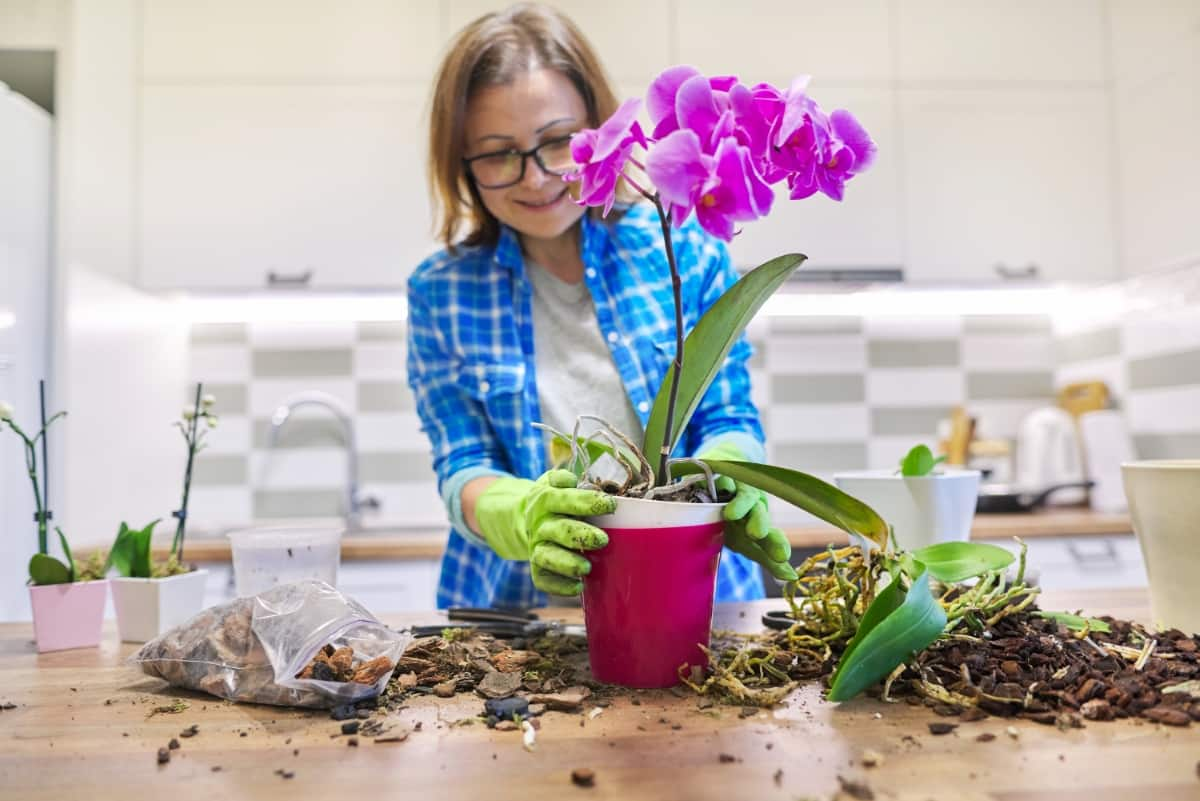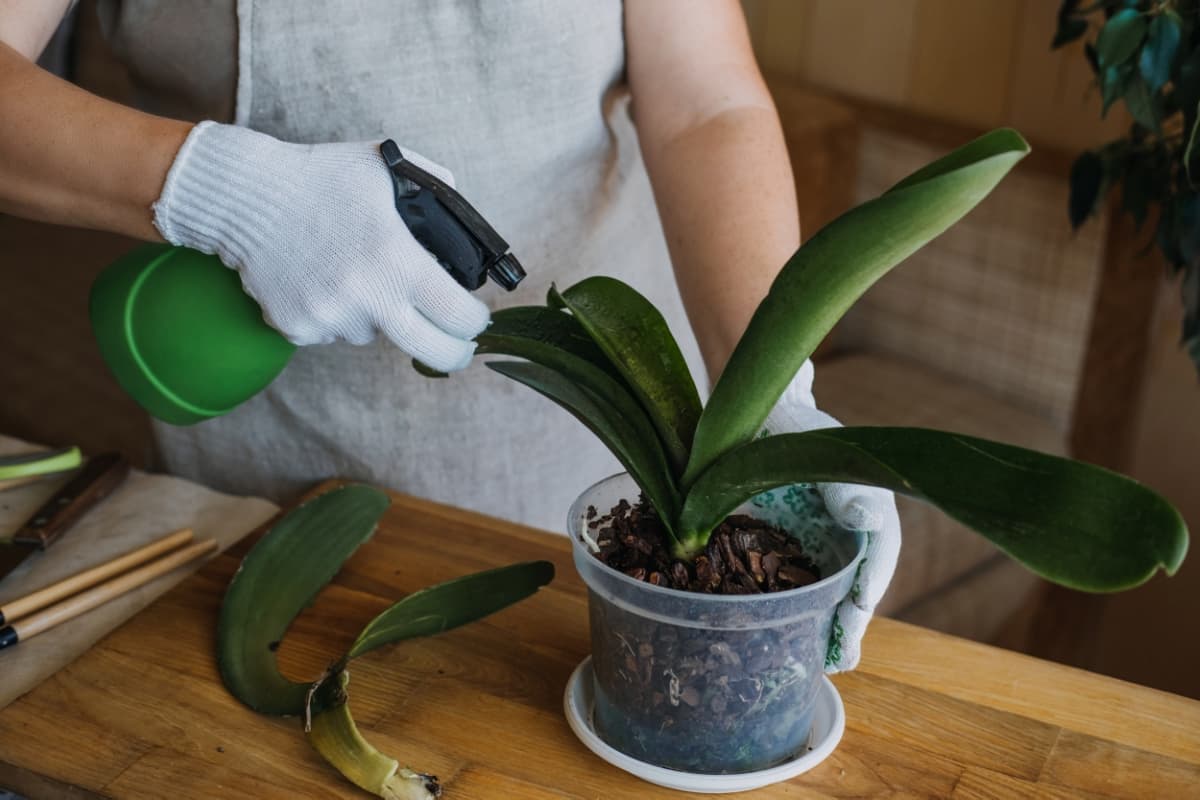Welcome to our blog on Common Orchid plant diseases and control! This article will explore the causal organisms, damage symptoms, spread, treatment options, prevention strategies, and management techniques for these diseases. By partnering with us, learn how to safeguard your orchid plants and guarantee a good crop. So, let’s get started.

Major and Common Orchid Diseases
Orchid is a metropolitan perennial flowering herb in the Orchidaceae family. Orchids are renowned for their exquisite beauty and captivating diversity. Orchids exhibit remarkable adaptations and evolutionary strategies, with a vast array of floral forms, colors, and patterns to attract specific pollinators.
They show a high degree of specialization, often forming symbiotic relationships with fungi and insects, leading to intricate mechanisms for reproduction and seed dispersal. Moreover, orchids have exceptional resilience, thriving in diverse habitats ranging from tropical rainforests to arid deserts.
| Disease | Symptoms |
| Rust Disease | Yellow-orange-colored raised pustules. The powdery appearance of rust-colored spores. |
| Black Rot Disease | Dark, water-soaked lesions.Mushy tissues and flower withering. |
| Brown Spot Disease | Circular spots with yellow halos.Sunken, dry, papery necrotic tissues. |
| Anthracnose Disease | Irregular-shaped spots on leaves.Sunken lesions and concave appearance. |
| Crown Rot Disease | Discoloration and softening of the crown.Rotting of pseudobulb base. |
| Fusarium Wilt Disease | Progressive leaf wilting & yellowing.Downward curl & vascular discoloration. |
| Bacterial Soft Rot Disease | Water-soaked lesions.Crown and pseudobulb rot. |
| Leaf Spot Disease | Circular or irregular water-soaked spots.Leaf necrosis. |
| Odontoglossum Ringspot Disease | Circular or oval-shaped necrotic lesions.Chlorotic spots and streaks. |
| Root Rot Disease | Discoloration and softening of the roots.Water-soaked roots & reduced flowering. |
Rust Disease Control in Orchid
- Causal Organism: Ceratobasidium orchidacearum
- Symptoms: The symptoms include small, yellow-orange-colored raised pustules or spots on the foliage; they develop a powdery appearance due to rust-colored spores. Infected plants show distorted tissues, stunted growth, and reduced vigor.
- Spread: The spores spread via air, water, and infected cuttings or divisions.
- Treatment: Spray copper hydroxide, copper sulfate, mancozeb, chlorothalonil, or thiophanate-methyl. Practice sanitation and spacing, and avoid overwatering.
Black Rot Disease Control in Orchid
- Causal Organism: Phytophthora cactorum
- Symptoms: The symptoms include dark, water-soaked lesions on the leaves, stems, or flowers. Infected plants show decay, discoloration, foul odor, flower withering, and soft and mushy tissues.
- Spread: The spores spread via water, soil, and infected plant material.
- Treatment: Spray fosetyl-aluminum, metalaxyl, or propamocarb. Practice spacing and sanitation, maintain air circulation, and avoid overwatering.
Brown Spot Disease Control in Orchid
- Causal Organism: Bipolaris spp.
- Symptoms: The symptoms include circular or irregular spots on leaves, pseudobulbs, or flowers. Infected plants show sunken, dry, papery necrotic tissues, yellow halos, leaf or flower discoloration, and distortion.
- Spread: Airborne spores spread by wind, water, infected planting material, or equipment.
- Treatment: Spray azoxystrobin, chlorothalonil, thiophanate-methyl, or mancozeb. Maintain spacing, avoid overwatering and practice sanitation.
In case you missed it: How to Identify and Treat Common Orchid Pests: Damage Symptoms, Spread, Control, and Prevention

Anthracnose Disease Control in Orchid
- Causal Organism: Colletotrichum spp.
- Symptoms: One of the primary symptoms of anthracnose is the development of circular or irregular-shaped spots on leaves. Infested plants show sunken lesions, concave appearance, discoloration, defoliation, and stem and flower rot.
- Spread: Spores disperse via air, rain splashing, infected equipment, and plant material.
- Treatment: Apply azoxystrobin, chlorothalonil, thiophanate-methyl, or mancozeb as a foliar spray or a drench. Monitor the plants regularly and avoid overhead irrigation. Practice spacing, sanitation, and weeding.
Crown Rot Disease Control in Orchid
- Causal Organism: Phytophthora parasitica and Pythium spp.
- Symptoms: The primary symptom is the discoloration and softening of the crown. Infected plants show rotting of pseudobulb base, leaf chlorosis, wilting, foul odor, stunted growth, and root decay.
- Spread: Zoospores are carried via water, contaminated soil, equipment, and infected plant material.
- Treatment and Management: Spray metalaxyl, mefenoxam, fosetyl-aluminum, or etridiazole. Practice sanitation and spacing. Maintain proper drainage and balanced nutrient levels.
Fusarium Wilt Disease Control in Orchid
- Causal Organism: Fusarium oxysporum
- Symptoms: One of the primary symptoms of Fusarium wilt is the progressive wilting and yellowing of the leaves. The wilted leaves often exhibit a characteristic downward curl. Infected plants show vascular discoloration, root rot, and stunted growth.
- Spread: Infected pseudobulbs or rhizomes, contaminated water, soil, and airborne spores.
- Treatment and Management: Spray thiophanate-methyl, propiconazole, or benomyl. Practice sanitation and plant disease-resistant cultivars. Avoid overfertilization, overwatering, and overcrowding.
Bacterial Soft Rot Disease Control in Orchid
- Causal Organism: Erwinia carotovora subsp. carotovora
- Symptoms: The primary symptom of bacterial soft rot is the development of soft, water-soaked lesions on leaves, stems, and pseudobulbs. Infected plants show decay, foul odor, leaf chlorosis, wilting, crown, and pseudobulb rot.
- Spread: Infected pseudobulbs or rhizomes, contaminated tools, water, and insect vectors.
- Treatment and Management: Spray copper hydroxide, copper sulfate, streptomycin, or oxytetracycline. Practice sanitation, weeding, and maintain proper drainage and good airflow.
Leaf Spot Disease Control in Orchid
- Causal Organism: Pseudomonas cichorii and Xanthomonas campestris pv. Orchidacearum
- Symptoms: The primary symptom is the development of circular or irregular water-soaked spots on leaves. Infested plants show leaf wilting, yellowing, distortion, stunting, and necrosis.
- Spread: Bacteria spread via aerosolized droplets, water, contaminated tools, infected leaves, stems, or pseudobulbs, and insect vectors like thrips or aphids.
- Treatment and Management: Spray copper hydroxide, copper sulfate, streptomycin, or oxytetracycline. Practice sanitation, promote ventilation, and avoid overwatering.
Odontoglossum Ringspot Disease Control in Orchid
- Causal Organism: Odontoglossum Ringspot Virus
- Symptoms: One of the primary symptoms is the appearance of circular or oval-shaped lesions with distinct margins or ring spots on leaves. Infected leaves show chlorotic spots and streaks, necrotic patches, or lesions.
- Spread: It spreads via infected cuttings or divisions, contaminated tools, and insect vectors like aphids.
- Treatment and Management: Spray insecticidal soaps like potassium salts of fatty acids for aphid control. Practice sanitation and spacing. Use virus-free propagation material. Regularly monitor and remove infected plants.
Root Rot Disease Control in Orchid
- Causal Organism: Pythium aphanidermatum and Rhizoctonia solani
- Symptoms: One of the early signs is the discoloration and softening of the roots. Infected plants show leaf chlorosis, defoliation, wilting, nutrient deficiencies, reduced flowering, and water-soaked roots.
- Spread: Mycelium or Spores spread via soil, splashing water, infected cuttings, divisions, plant debris, tools, and insect vectors like nematodes.
- Treatment and Management: Use biocontrol agents, such as Trichoderma spp., to control the pathogens. Practice sanitation, promote airflow, avoid overwatering, and maintain proper drainage.
In case you missed it: How to Identify and Treat Lettuce Pests: Damage Symptoms, Prevention, and Control

Conclusion
Some major diseases affecting orchid plants include rust, black rot, brown spot, anthracnose, crown rot, fusarium wilt, bacterial soft rot, leaf spot, odontoglossum ringspot, and root rot disease. Various organisms cause these diseases and exhibit specific symptoms, modes of spread, and management approaches.
- Beneficial Insects in Pest Management
- Natural Solutions for Pest Control in Flower Gardens
- Types of Fungicides Used in Agriculture
- Common Issues in the Fruit Development Stage of Pomegranate Farming
- Fruit Development Issues in Papaya: Easy Solutions and Treatment
- Soil-Borne Diseases and How to Protect Your Plants
- Practices to Prevent Disease Spread in the Garden
- From Wilted to Thriving: How to Treat Root Rot Naturally in Houseplants
- Natural Remedies to Cure Brown Spots on Fig Tree Leaves